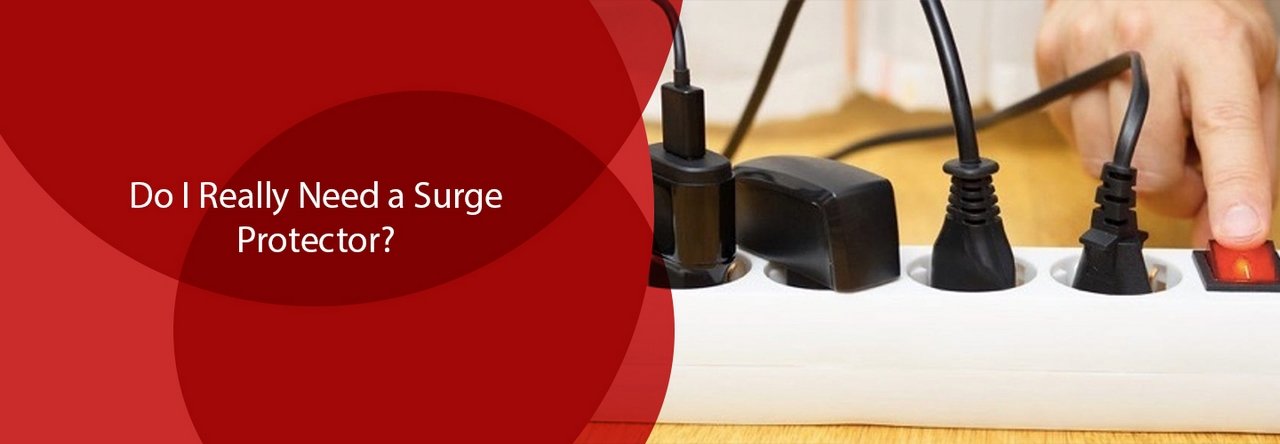Table of Contents Show
Does it ever bother you that your electronics and home appliances could be affected by a power surge? All of your electronics and home appliances are very much vulnerable to power surges.

Moreover, if there’s a large enough power surge, it could possibly cause permanent damage to your electronics by melting the plastic or frying its circuits.
In this article, we will be sharing with you what is a surge protector, how they work, and what actually causes a surge. You should be able to determine if you need a surge protector by the end of this read because it’s definitely a necessity.
What is a Surge Protector and How Does it Work?
A surge protector is a small-sized device with two major functions. It gives you the ability to plug more than one device or appliance into one power outlet.
Secondly, which is also its most important function, is that it offers protection to electronic devices like the TV or laptop from a high-voltage power surge.
A power surge or spike occurs when there is a sudden increase in voltage that is much higher than the designated electricity flow in your circuits.
A surge protector passes current along with the power outlet to the number of devices that are plugged into a power strip. If the voltage rises above a certain level, the surge protector then diverts the extra voltage into the outlet’s ground wire.
These grounding wires always run parallel to both hot and neutral wires. In fact, they offer a pathway for the current to flow if there’s a breakdown in the hot and neutral wires that usually carry the electrical current.
How is a Power Surge Different from a Spike?
When the rise in voltage lasts for three nanoseconds or more, it’s called a power surge. Whereas, if the voltage increase simply lasts from one to two nanoseconds, it’s then called a spike.
That’s all the difference you need to know. That said, just those nanoseconds have the ability to inflict major damage on an appliance or electronic if the surge itself is high enough.
Read Also:
What Causes a Power Surge or Spike?
Perhaps the most known cause for a power surge or spike is usually lighting, even though it’s rather uncommon.
Other more common causes are the operation of higher-powered devices like air conditioners and refrigerators. Its compressors and motors require a good amount of energy to power on and off.
During when it’s being switched on and off, it creates a sudden but brief demand for power that upsets the current flow of electricity. The damage usually occurs in a building’s electrical system and can be instantaneous if it’s not protected, or you may notice the damage occurring gradually.
Downed power lines, utility company’s equipment, and faulty wiring are other most common causes for a power surge. There are also plenty of possible points where an error might occur within the power lines bringing electricity into your home or in the transformers, which can cause an eventful power surge.
What is the Difference Between a Power Strip and Surge Protector?
It’s vital that you know that not every power strip is actually a surge protector. Despite the fact that they may look very similar, the main purpose of a power strip is to simply add an additional outlet space. We understand that it might get confusing to tell the difference even a power strip does not say so.
Therefore, it’s important that you look at the power strip’s packaging when trying to figure out what you need. A surge protector ought to have a joules rating on its packaging. What are joules?
Well, joules are used to measure energy. They tend to measure just how long the appliance will be protected. The joules or numbers work similarly to a reservoir.
When the protectors do their work, it always takes a hit, which then diminishes the joules over time. Sometimes, all it needs is a single massive surge to diminish all the joules.
How Do I Know When to Replace a Surge Protector?
You need to keep track of spikes and surges, as this helps you know when it’s time to get yourself a new surge protector.
As shared earlier, when there’s a massive hit, the number of joules might be diminished and have no further ability to protect your home appliances and electronics.
It’s also important to know when your surge protector was purchased. A good surge protector should be able to last you three to five years. That said, the common rule is to have them replaced every two years
Conclusion
Surge protectors are a must if you want to protect your home appliances and devices. In fact, if your neighborhood has frequent power surges and spikes, it’s advisable to invest in complete home surge protection.










